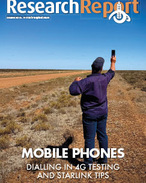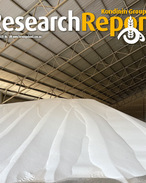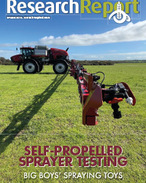This article is 2 years old. Images might not display.
About six million Anameka variety saltbush shrubs have been planted to date, mostly in WA to help better utilise land impacted by dryland salinity.
And now the plants are heading east, with hundreds of thousands of Anameka saltbush currently being planted in new regions across Australia's southeast. Anameka was selected from 60,000 saltbush plants collected from across Australia, each with different qualities.
In coming up with the ideal saltbush to improve farm profit, CSIRO was keen to find a higher energy variety that sheep and cattle loved eating.
CSIRO agricultural scientist, Dr Hayley Norman, said sheep are surprisingly fussy eaters.
"We followed their lead by observing which plants the sheep preferred in the paddock," Dr Norman said.
The CSIRO's Drought Resilience Mission is driving the adoption of the shrub to support farmers and lower the impacts of droughts.
Dr Noman said modelling and farmer feedback indicates the productivity benefits are greatest during dry years or particular seasons.
"Livestock producers face annual feed gaps over summer and autumn when there is low rainfall and this period can be extended or exacerbated during a drought," she said.
"Farmers often need feed supplements to meet energy, protein, vitamin and mineral requirements during this time. Planting Anameka offers farmers a long-term solution to meet feed gaps, as they can grow for over 20 years if managed well."
CSIRO research in WA has found Anameka offers 20 per cent higher economic returns compared to standard saltbushes, particularly in relatively dry years. This includes greater wool and meat production, and reduced supplementary feed.
Marcus Hooke, a Merino sheep farmer in Booroorban, southern New South Wales, is hoping to capture some of these benefits.
This winter, he is doubling the number of Anameka in his paddocks with lamb survivability a key driver.
"It's early days but we believe the benefits of Saltbush will be long-term," Hooke said.
"For us the benefits will be two-sided in providing crucial shelter to lambs to improve their survivability out on the plains during colder months, and for feed to provide energy during dry seasons."
Hooke is one of 325 farmers who have adopted Anameka saltbush across Australia.
Partners in the saltbush program include Chatfield's Tree Nursery, Tulla Natives, Select Carbon, Meat & Livestock Australia, the Department of Primary Industries and Regional Development in WA, Australian Wool Innovation and several producer groups across Australia.
The work has also received funding from the Australian Government's Future Drought Fund.
Farmers interested in exploring Anameka can contact Tulla Natives nursery for supply to New South Wales, Victoria, South Australia and Queensland, or Chatfield's Tree Nursery for WA.























